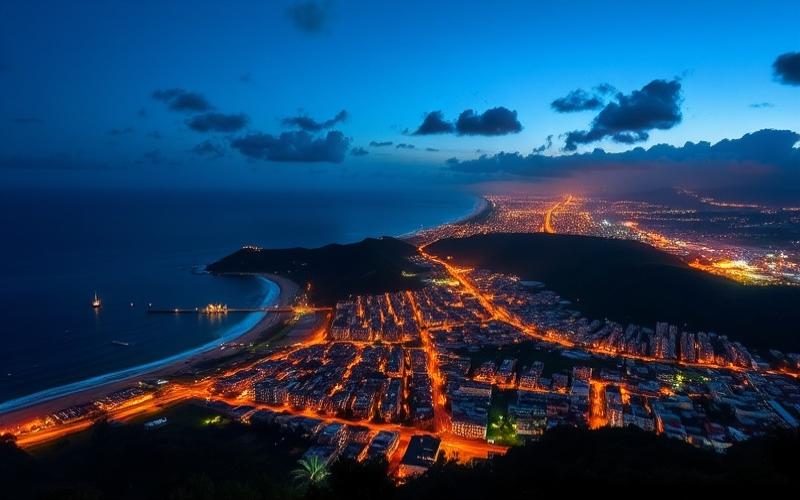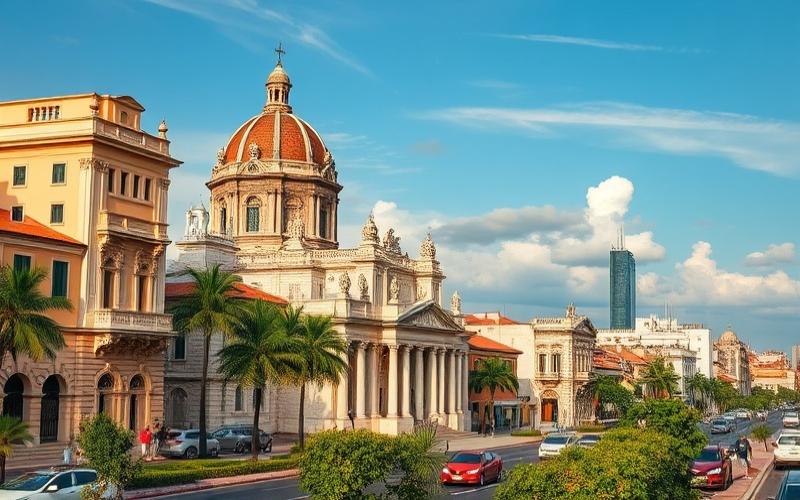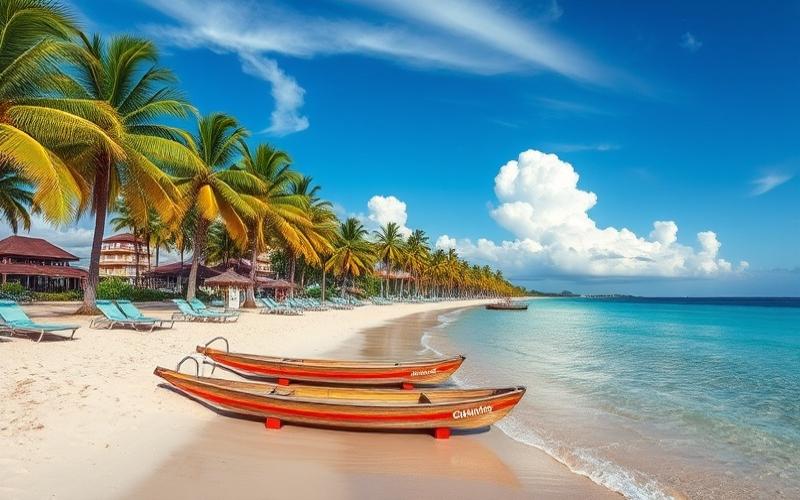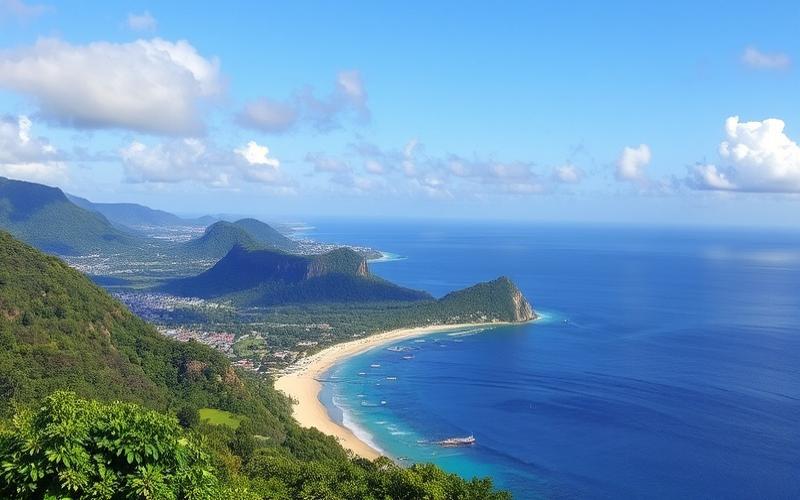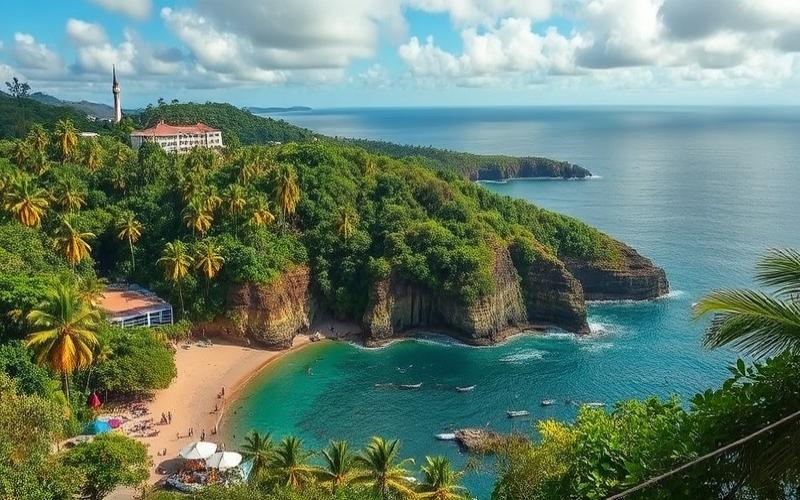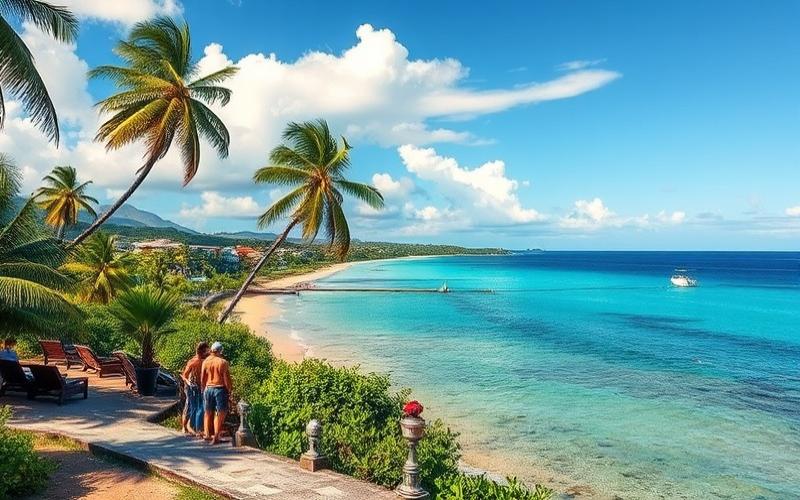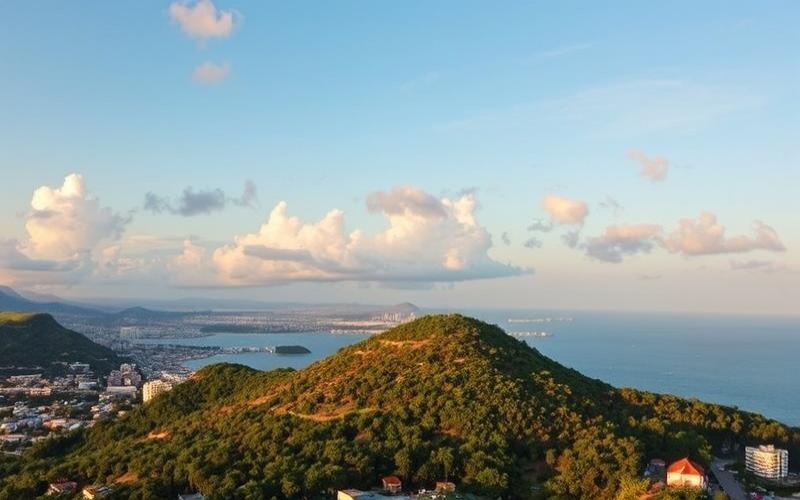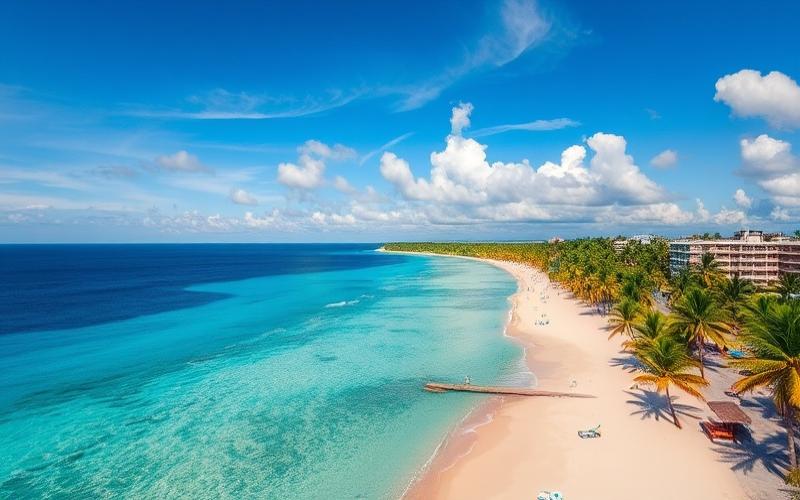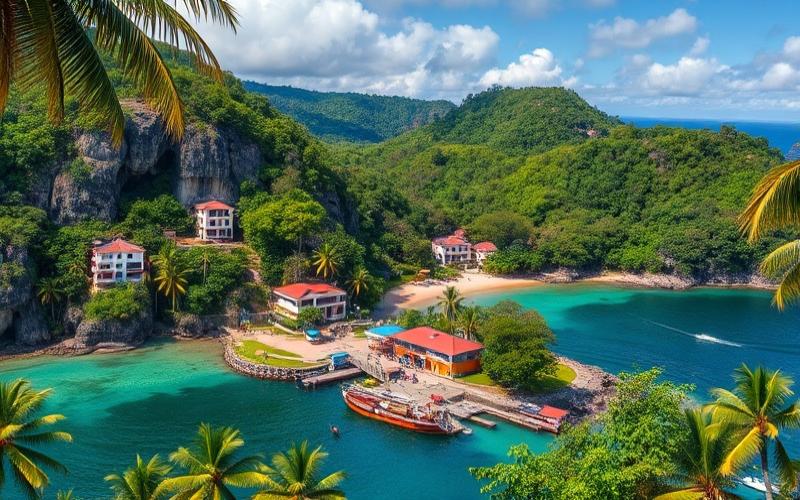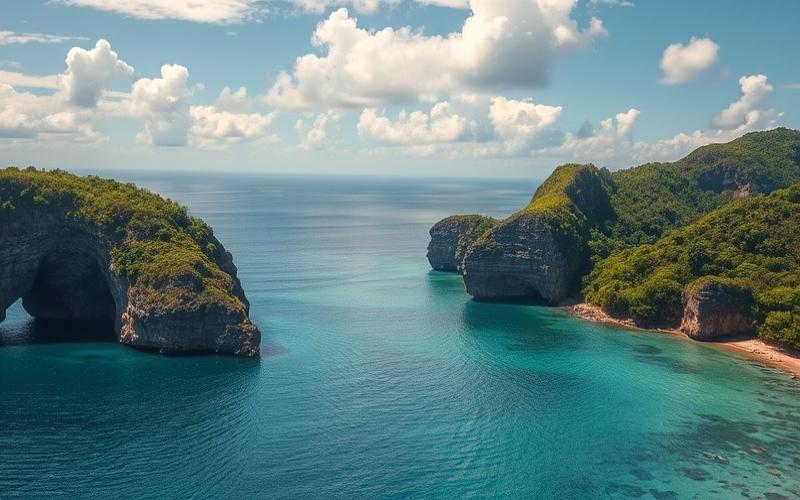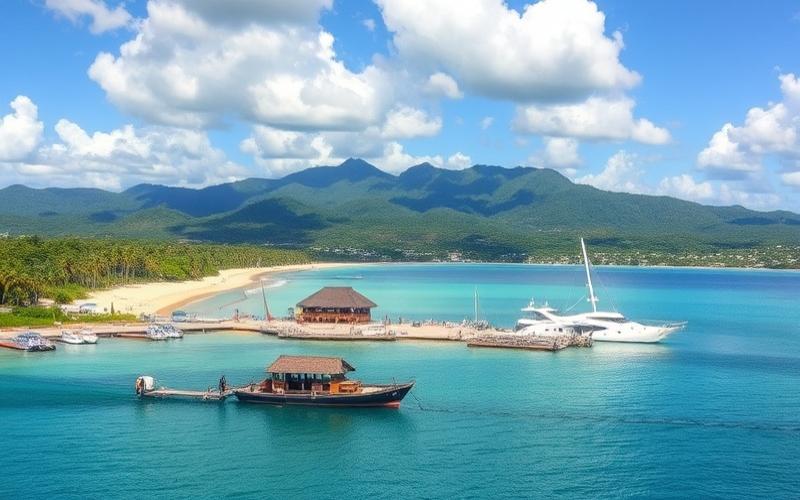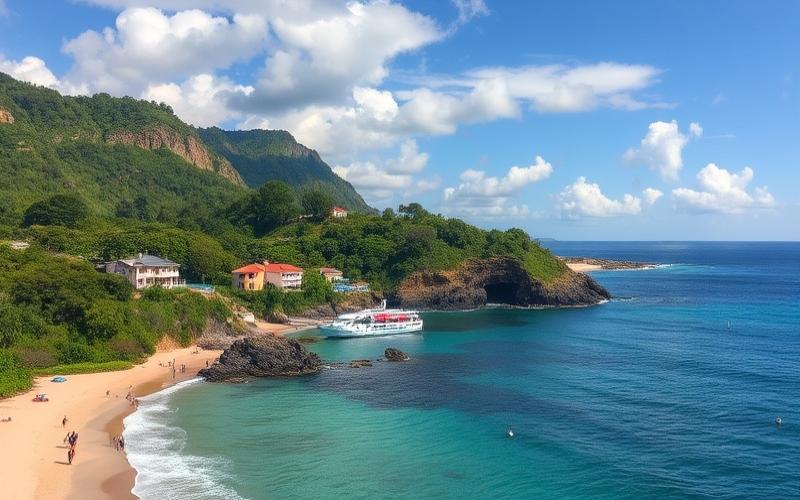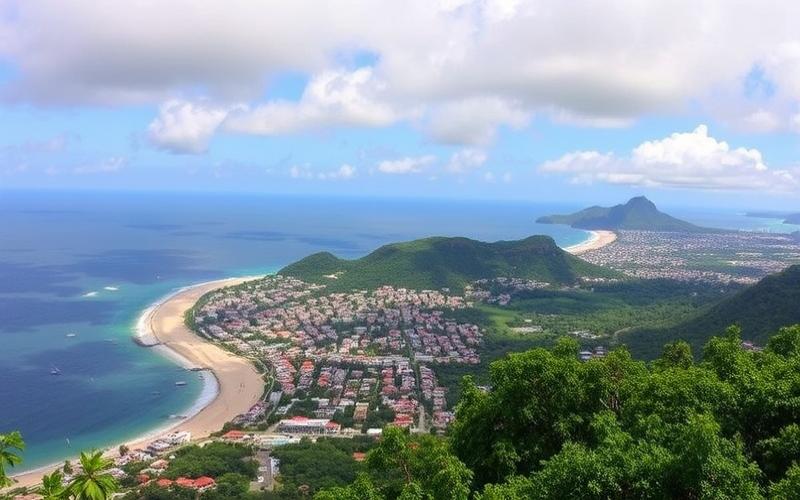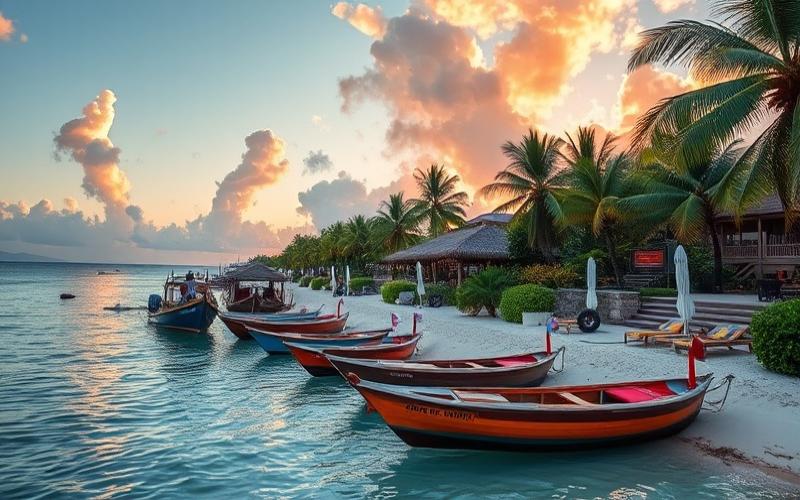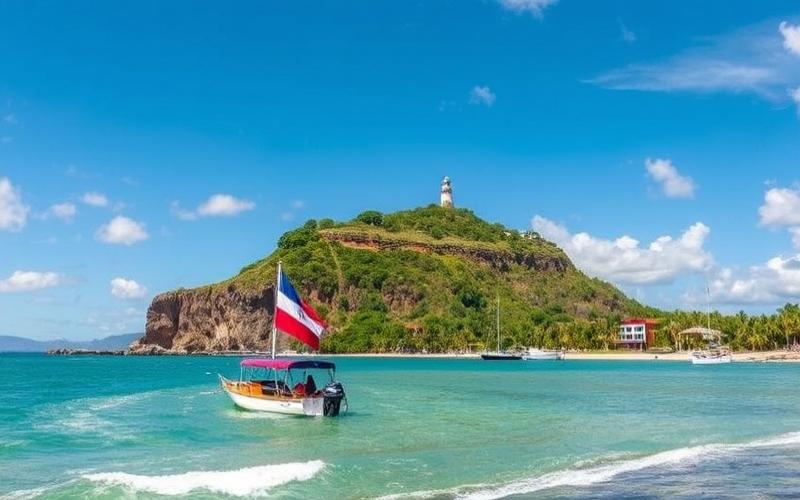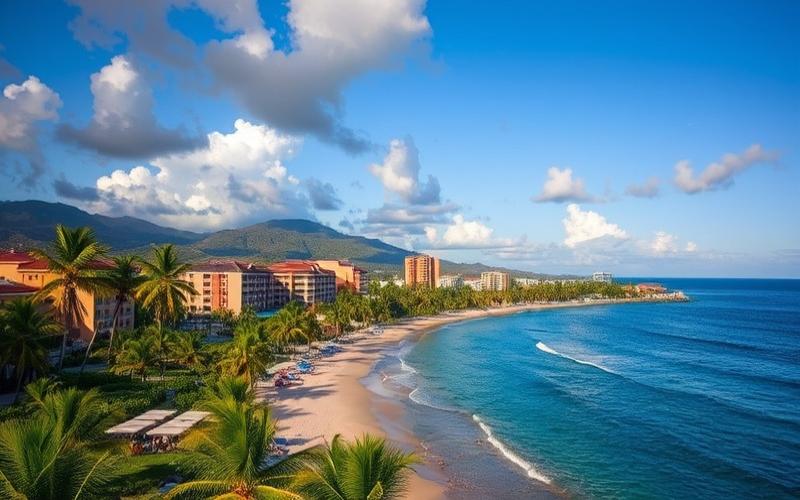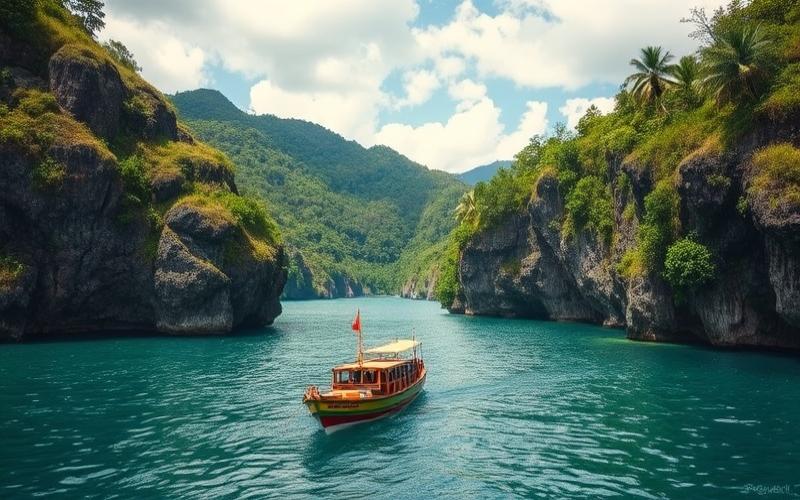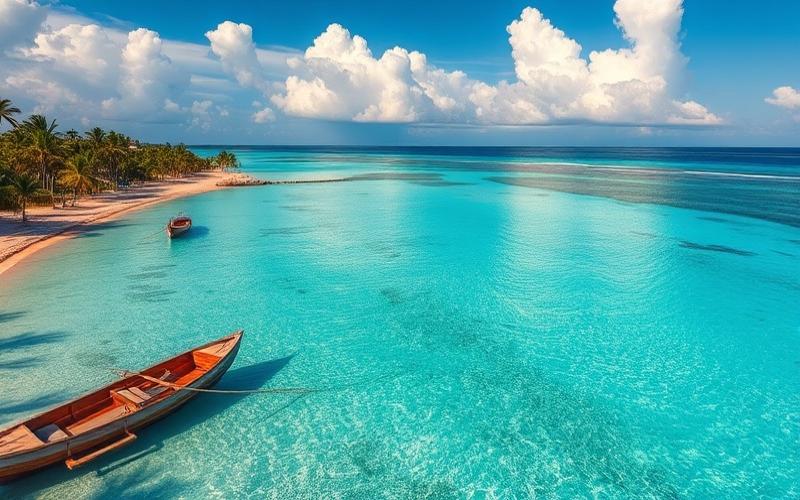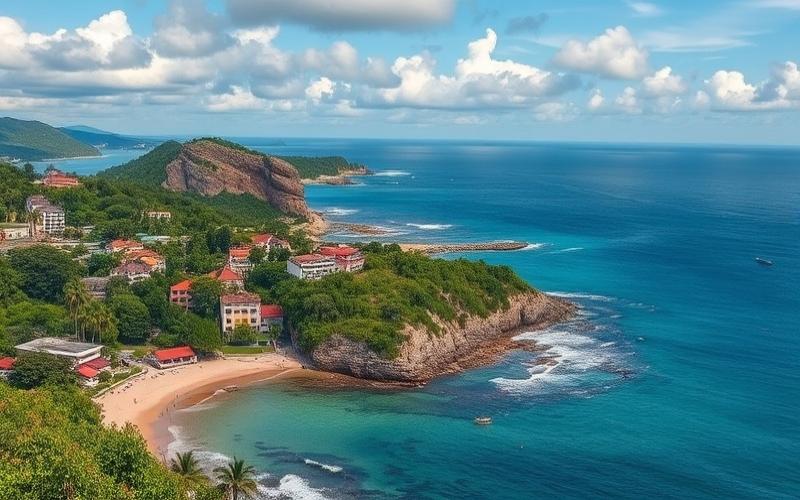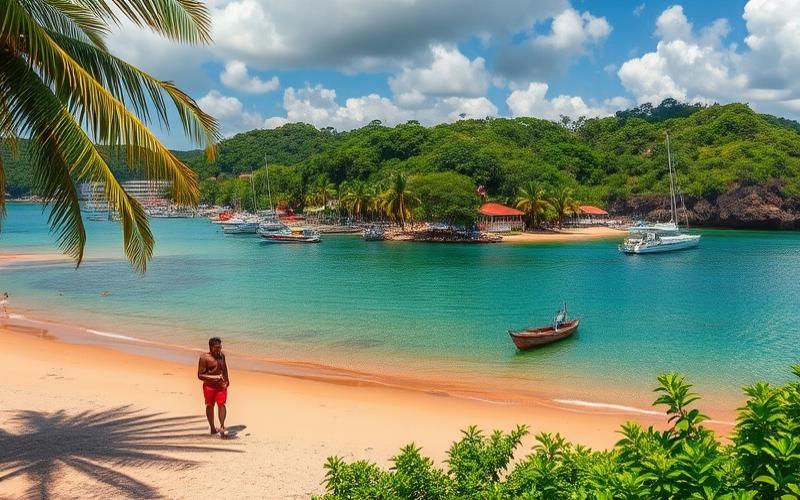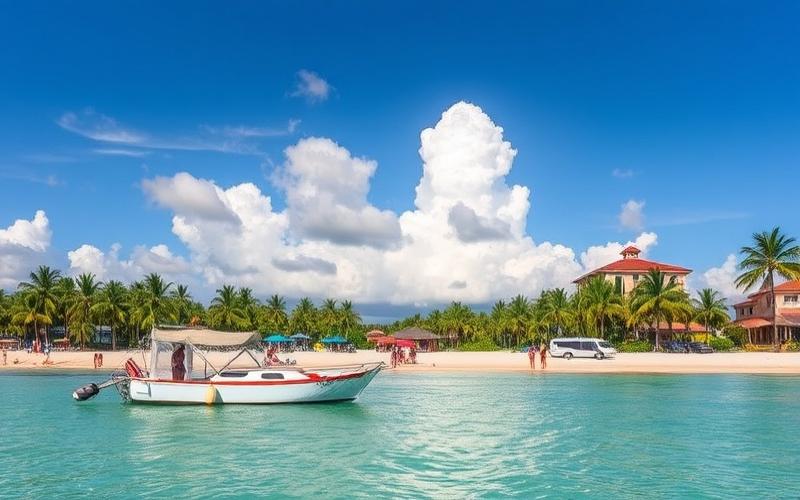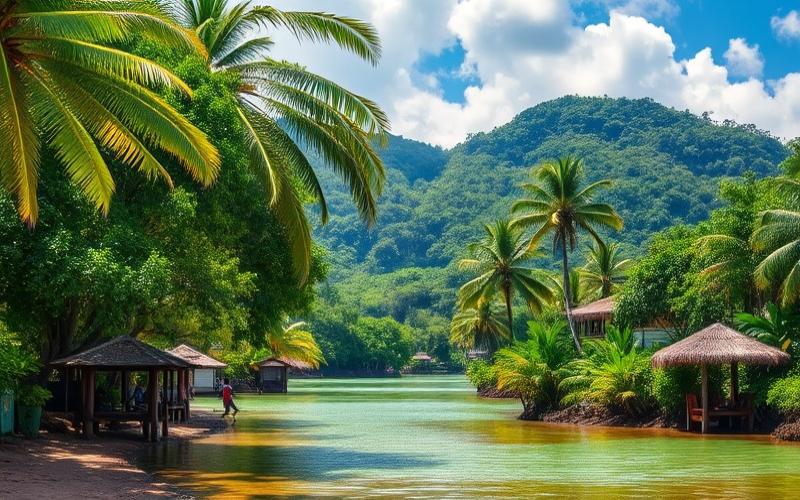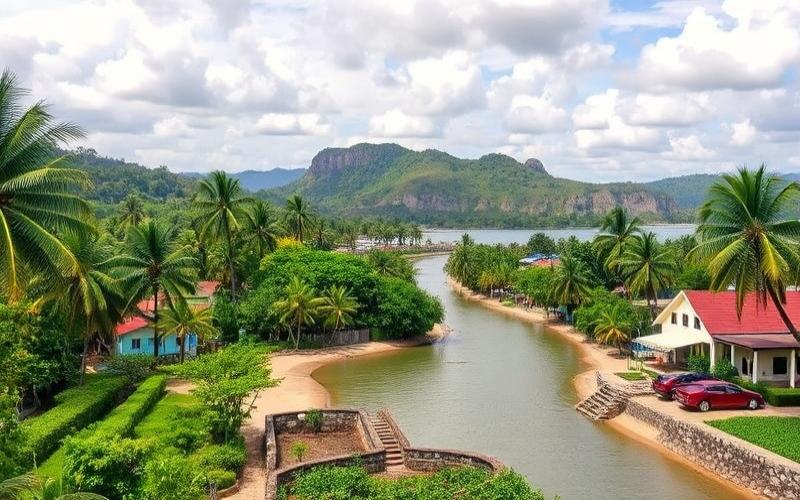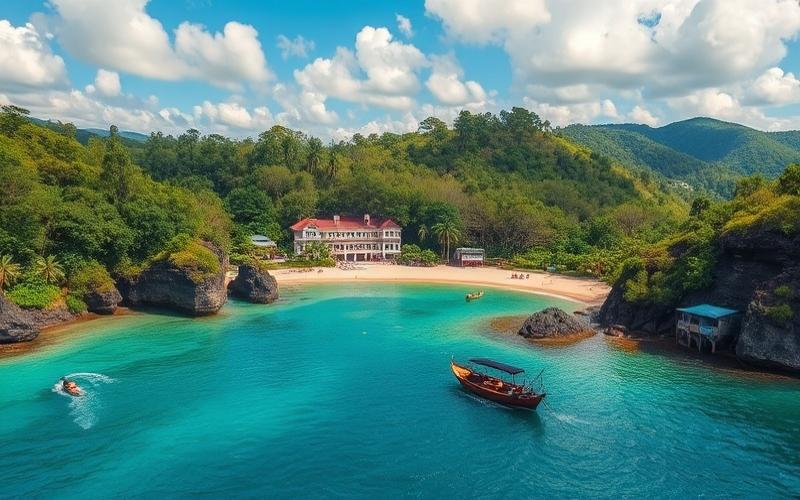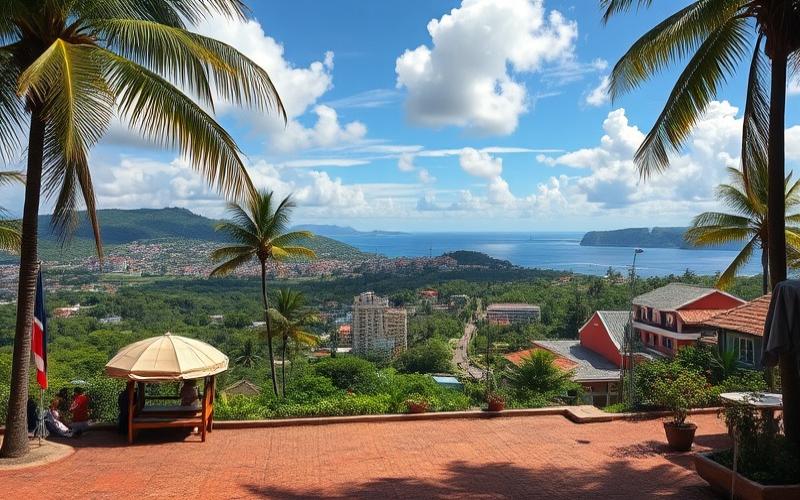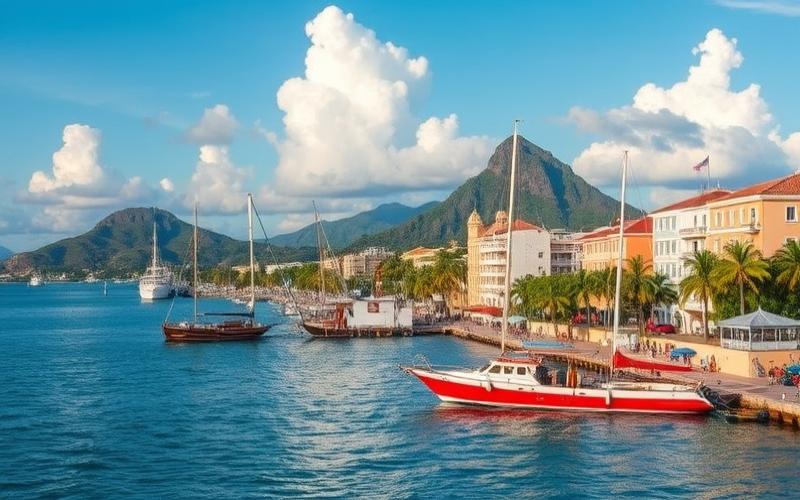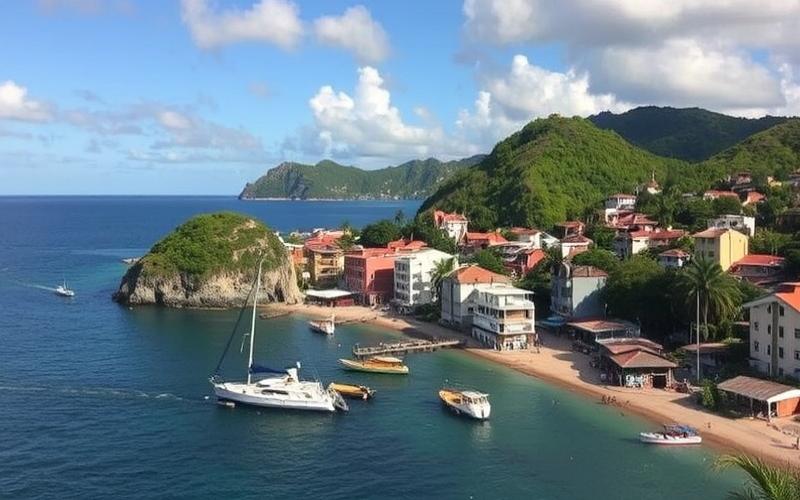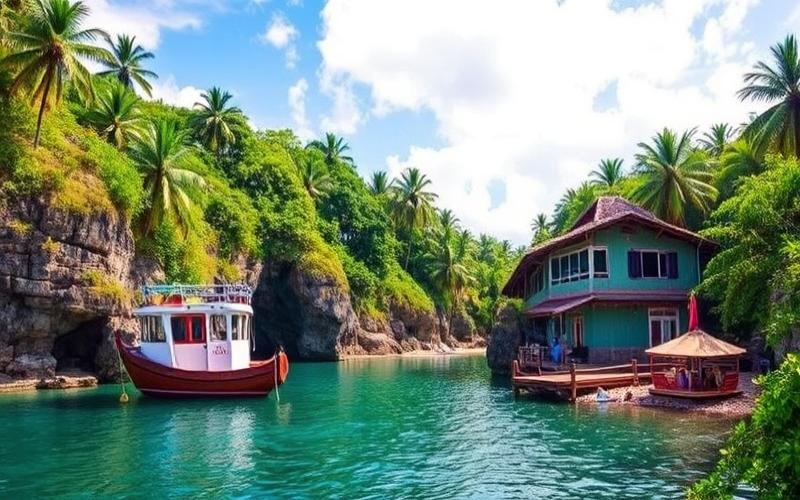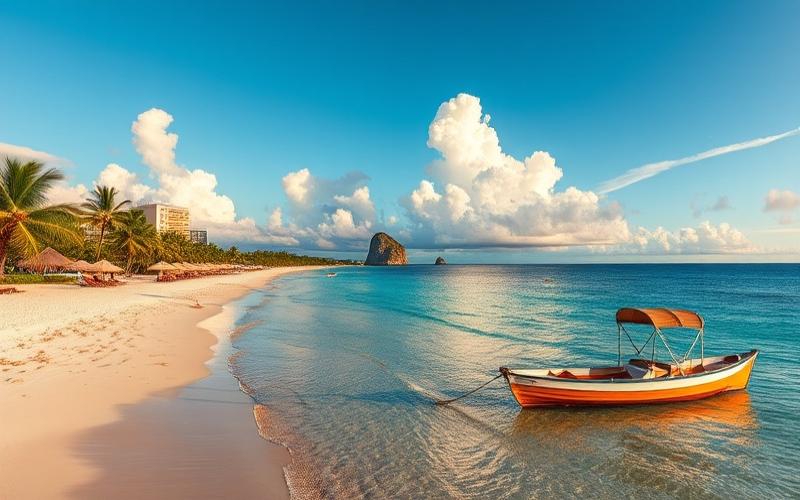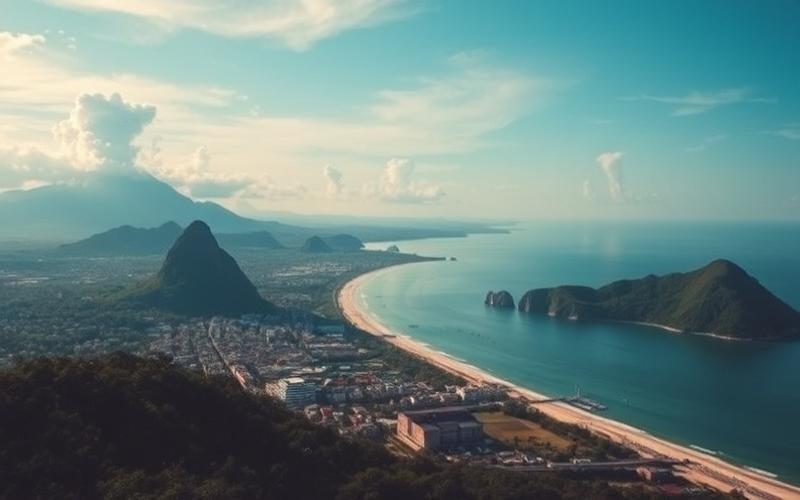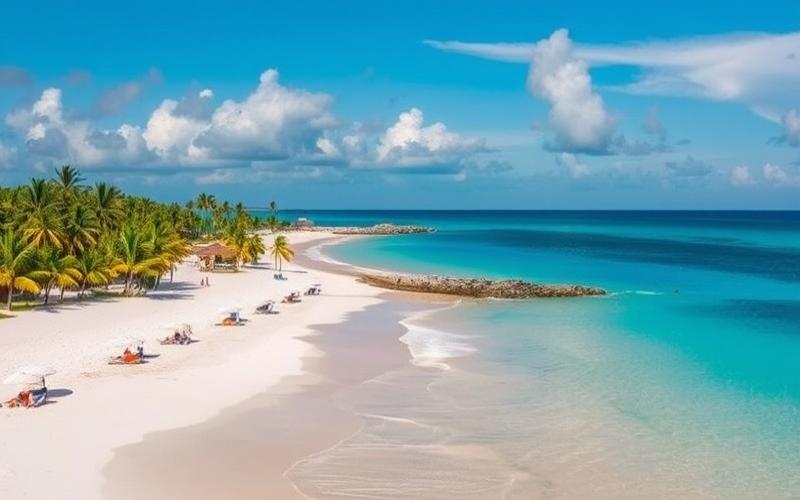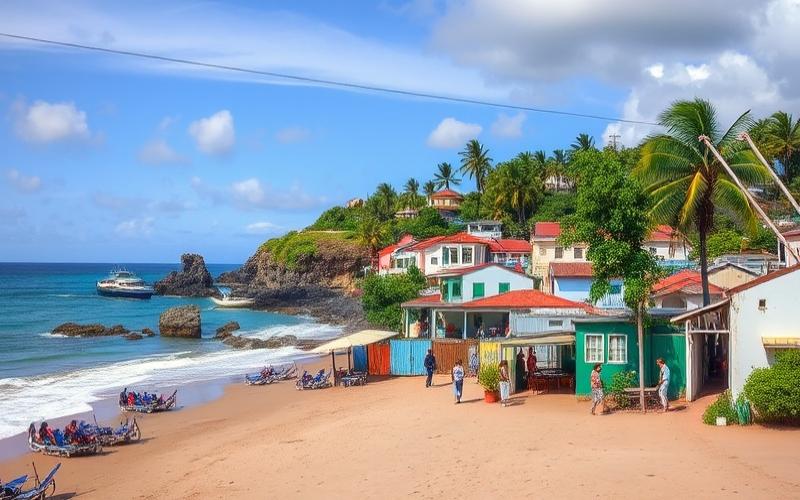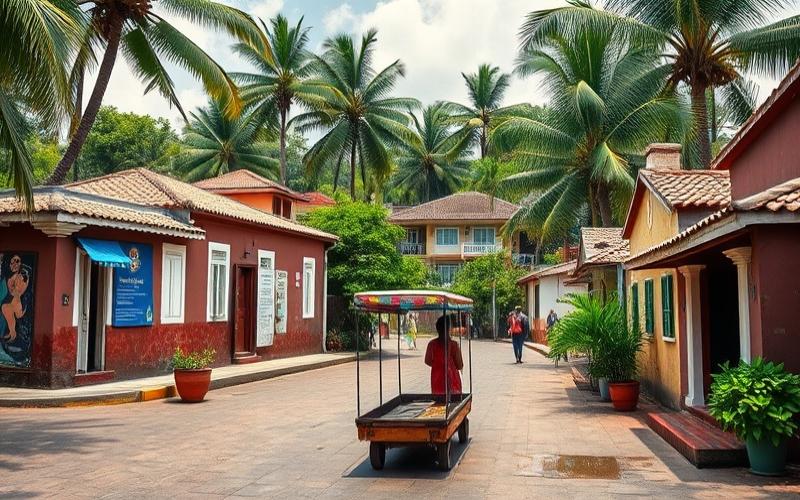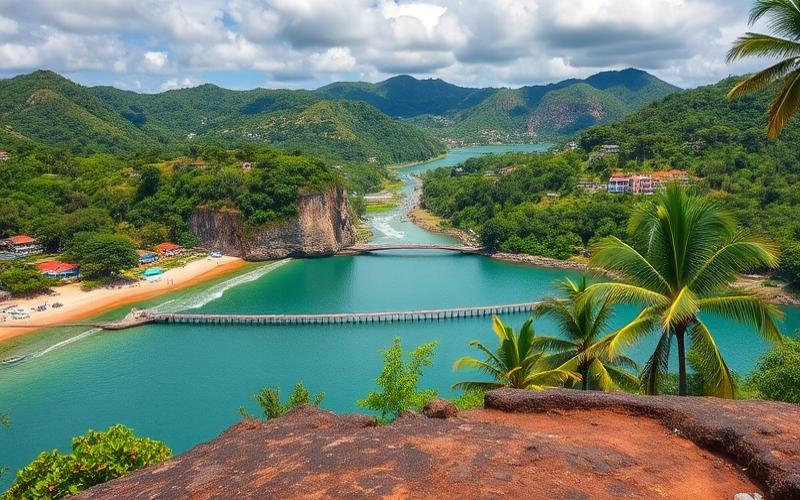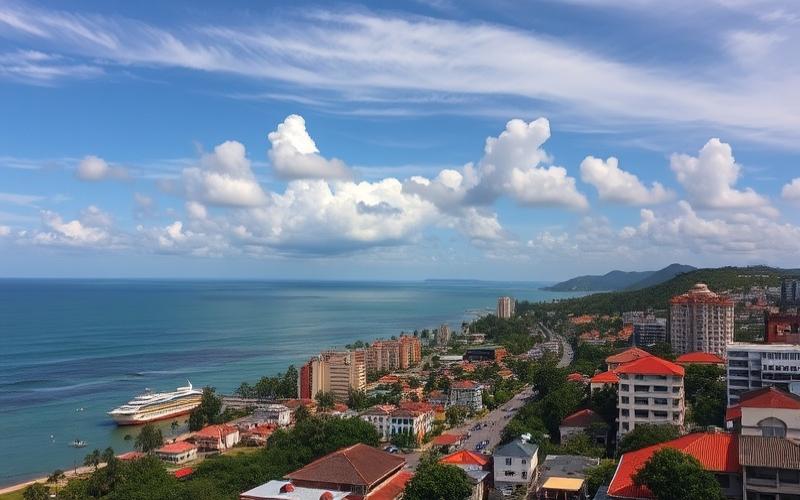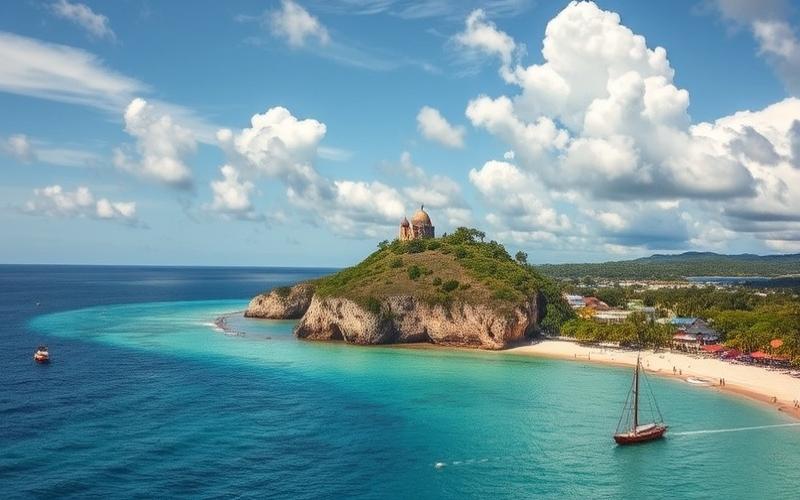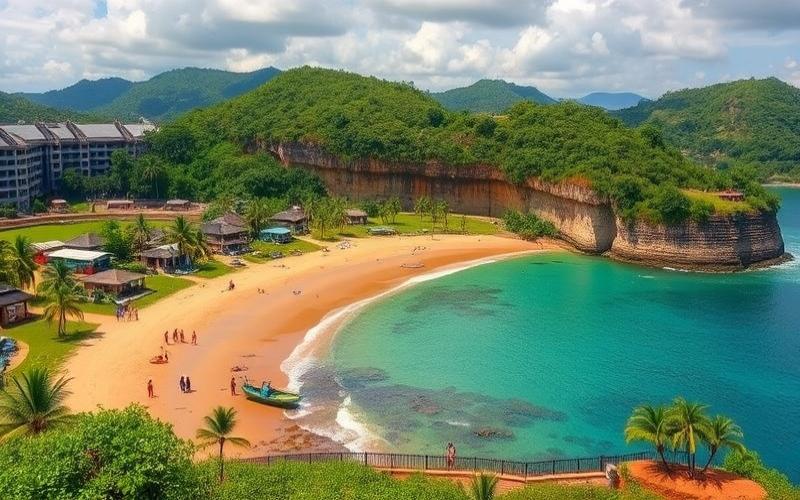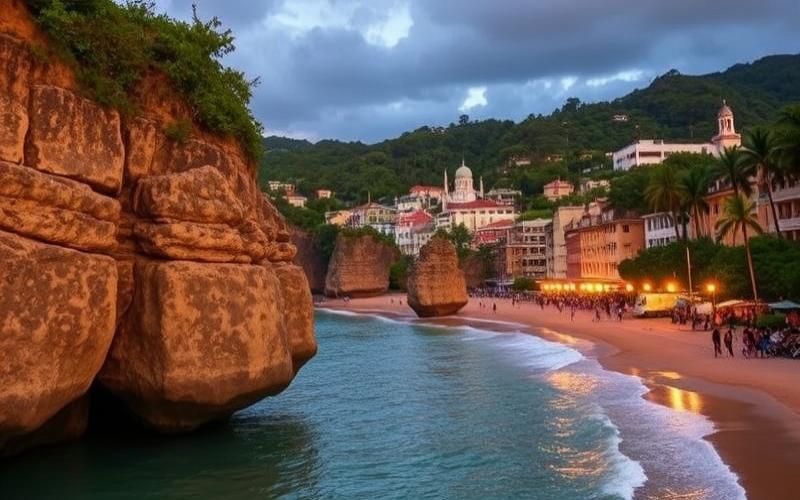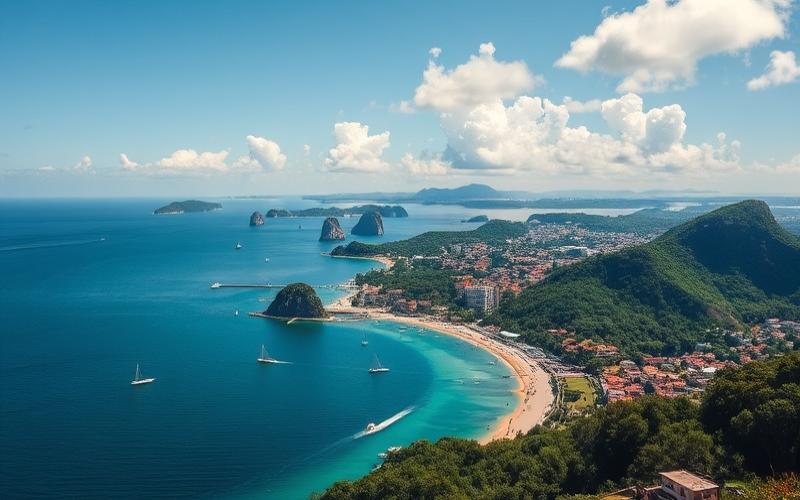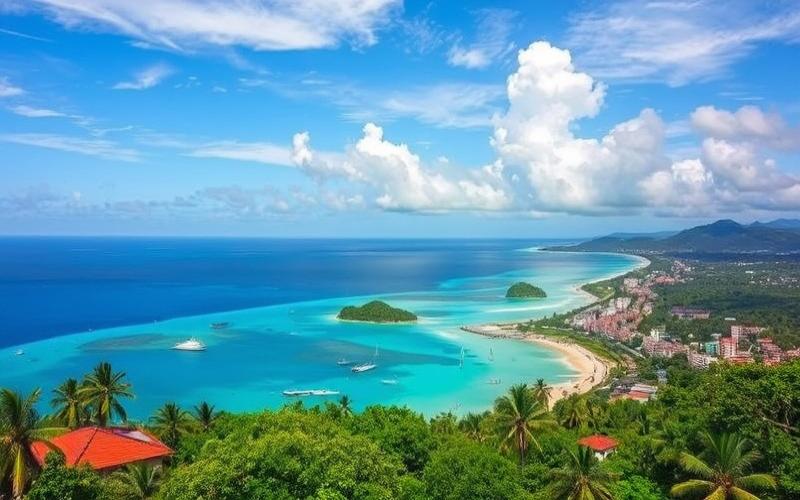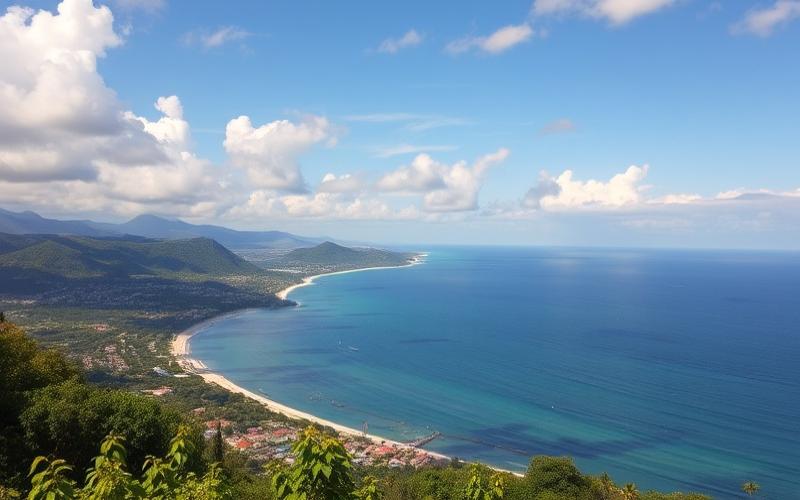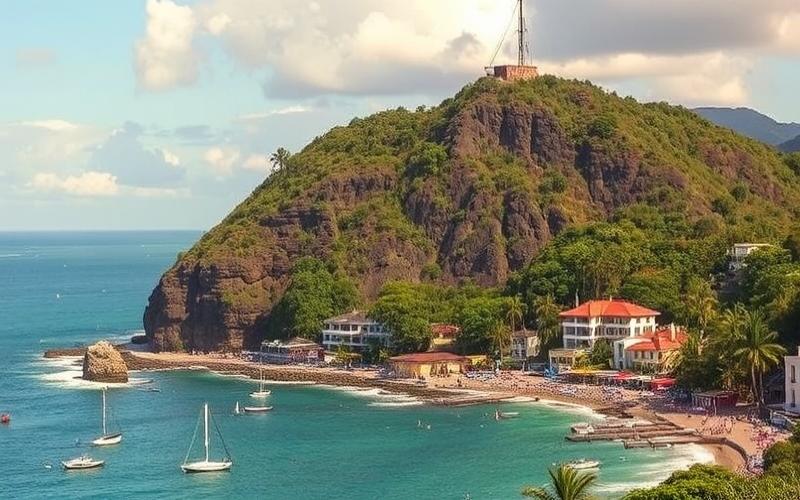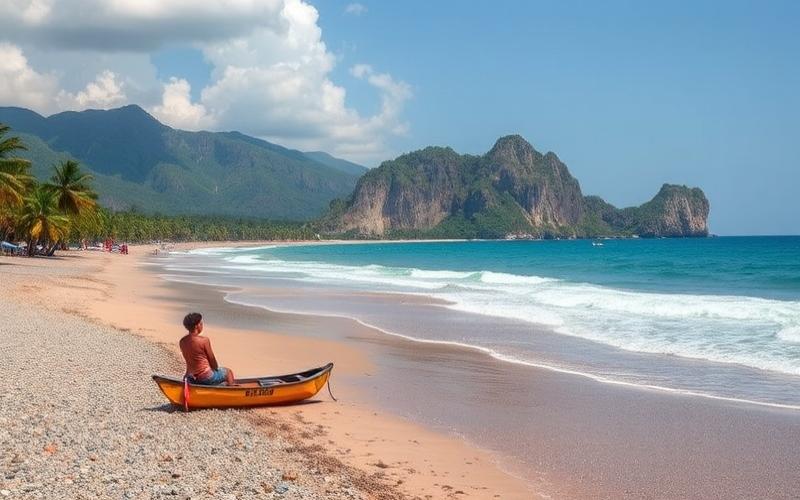
 Published on and written by Cyril Jarnias
Published on and written by Cyril Jarnias
Exploring Real Estate Investment in the Dominican Republic
Exploring real estate investment in the Dominican Republic proves to be a fascinating venture, especially when compared to opportunities offered by its neighboring countries. Between its paradise beaches, growing economy, and booming market, the Dominican Republic attracts many investors seeking profitability.
Comparison with Neighboring Destinations
However, in this dynamic Caribbean region, the advantages of destinations such as Puerto Rico, Haiti, or even the Bahamas are not far behind, each presenting its own unique opportunities and challenges.
Key Factors to Consider
This article reviews the key factors to consider for those wishing to make an informed choice, taking into account market trends, local regulations, and appreciation potential, to determine which destination offers the most investment potential.
Good to Know:
The Dominican Republic benefits from attractive taxation for foreign investors, with possible exemptions on property taxes.
Evaluating the Benefits of Real Estate Purchase in the Dominican Republic
Tax Benefits Related to Real Estate Purchase in the Dominican Republic:
- Exemption from real estate registration fees (from 3% to 0%) for the first acquisition.
- 50% exemption on income tax related to real estate sale profits.
- 50% exemption on mortgage fees if the lender is a local financial institution.
- Exemption from property tax for eligible owners and reduction to 0.5% instead of 1%, with specific exemptions for seniors or first-time buyers.
- CONFOTUR Law: total exemption from property taxes and other taxes for up to 15 years within approved tourism projects, also accessible to foreign buyers.
- No restrictions for foreigners: same rights as Dominican citizens.
Other Tax Incentives and Regulatory Benefits:
Quick residence permit acquisition through real estate investment (residency program).
Partial or total exemption from customs duties on personal goods and certain imported vehicles as part of relocation or settlement.
Cost of Living and Purchasing Power:
The Dominican Republic stands out for its low cost of living compared to neighboring countries such as Puerto Rico, Cuba, or even some French Caribbean territories.
List of Main Advantageous Budget Items:
- Affordable local food
- Inexpensive domestic services
- Reduced housing taxation
This context significantly increases investors’ purchasing power, allowing not only higher profitability but also less expensive property maintenance.
| Criterion | Dominican Republic | Haiti | Puerto Rico | Cuba |
|---|---|---|---|---|
| Real Estate Taxation | Low, many exemptions | Unstable | High | State-controlled |
| Foreigner Rights | Full rights | Limited | Limited | Very limited |
| Political Stability | Stable | Unstable | Stable | Stable |
| Cost of Living | Low | Very low | Medium-high | Low-medium |
| Economic Growth | * Strong | * Weak | * Moderate | * Weak |
Economic Outlook:
The Dominican Republic has shown a high regional economic growth rate for over a decade. This dynamic supports continuous appreciation of the real estate market as well as an expanding tourism sector. Social and banking stability also reinforce this attractiveness.
Attractive Environmental and Cultural Factors:
- World-renowned paradise beaches (Punta Cana, Las Terrenas)
- Pleasant tropical climate year-round
- Quality and cultural diversity: hospitality, varied cuisine, local musical richness
- Abundant nautical activities: scuba diving, water sports…
These elements give the Dominican Republic a high quality of life that appeals both to retirees and investors seeking a profitable secondary or rental residence.
The combination of attractive taxation, moderate daily costs, robust economic prospects, and environmental quality positions the Dominican Republic as a preferred destination compared to other Caribbean markets.
Good to Know:
Real estate purchase in the Dominican Republic offers several attractive tax benefits for foreign buyers, including exemptions from capital gains tax and reductions on property tax for several years under certain conditions. Compared to neighboring countries, these tax incentives are often more generous, enhancing the country’s appeal for investors. The cost of living is relatively low, increasing owners’ purchasing power and allowing full enjoyment of local resources without excessive financial compromises. Moreover, the country shows encouraging economic growth prospects, likely to increase real estate investment value over time. Environmentally, the Dominican Republic is renowned for its exceptional beaches and pleasant quality of life, assets that, combined with a rich and welcoming culture, can attract more buyers sensitive to an attractive living environment, sometimes in contrast with the limited options offered by neighboring countries.
Real Estate Taxation: Comparison Between the Dominican Republic and Its Neighbors
Main Real Estate Taxes in the Dominican Republic
- Property Tax (IPI): Annual 1% tax applied to the value of all real estate owned by an individual, only on the portion exceeding RD$10,190,833 (approximately $166,000 USD). Properties below this threshold are exempt. For companies, the rate is also 1%, but it applies to all real estate assets held.
- Value Added Tax (ITBIS): Purchase of new real estate or certain transactions may be subject to the standard VAT/ITBIS rate set at 18%. Older homes or resales are generally not affected.
- Transfer Fees: During property transfer, a registration fee is due. This amount varies by property type and location and can represent a significant cost for the buyer.
Comparative Table – Real Estate Taxes at Purchase
| Country | Annual Property Tax | Transfer Fees | VAT/Equivalent | Specifics |
|---|---|---|---|---|
| Dominican Republic | IPI: 1% > RD$10M | Transfer fees | ITBIS: 18%* | Exemption up to ~$166k USD; possible deductions; tourism zone incentives |
| Haiti | Local variable | High registration* | No general VAT | Less transparent tax system |
| Puerto Rico | Local property tax | Stamp duty | Sales tax: ~11.5% | US regime for foreigners |
| Jamaica | Variable property tax | Stamp Duty + Transfer Tax (~2%) | – | – |
Tax Incentives in the Dominican Republic
The CONFOTUR program offers tax exemptions of up to ten years on several taxes (annual property tax, rental income taxes, and transfers) for certain tourism projects located in designated geographic areas.
Other exemptions exist for primary residences of seniors (65+) and certain agricultural properties.
Concrete Examples – Investment Scenarios
Example of purchasing a new tourist apartment in Punta Cana (~$200,000 USD):
- IPI not applicable if first acquisition via CONFOTUR
- ITBIS potentially applicable during first new purchase (up to ~$36,000 USD), but often exempt in labeled tourism projects
- Additional legal and notary fees
For the same investment in Jamaica:
- Lower annual property tax
- Transfer fees around ~2%, approximately $4,000 USD
For Haiti:
High initial cost during transfer with variable fees by municipality; less transparent system
For Puerto Rico:
Taxation aligned with the United States, relatively high sales tax but partial application depending on property nature
The tax differences between these countries therefore play a major role in foreign investors’ choices. The presence of exemptions like those offered by CONFOTUR makes certain purchases in the Dominican Republic particularly attractive—especially in tourism sectors where several years without property taxes or rental income taxes are possible.
Potential investors should therefore compare:
- The total amount paid during transfer
- Recurring annual charges
- Possible existence of specific tax relief for foreigners or tourism investments
This favorable tax context explains why the Dominican Republic attracts more than its neighbors as it allows international investors—especially those targeting the tourism market—significant net return optimization through substantial temporary exemptions that have no real equivalent elsewhere in the region.
Good to Know:
In the Dominican Republic, purchasing real estate is subject to ITBIS, equivalent to 18% on associated services, and real estate profit tax, representing about 3% of the value exceeding 500,000 pesos. For comparison, in Haiti, property tax can reach 15%, while Puerto Rico imposes a 1% transfer fee and Jamaica applies a 5.5% transfer tax. However, the Dominican Republic offers attractive tax incentives, including tax exemptions for investments in tourism or special economic zones, making purchases potentially advantageous. An investor could, for example, save considerably by opting for property in these special zones, compared to other islands where such exemptions are rare. These factors can strongly influence foreign investors’ choices, seeking to maximize their returns while benefiting from a more lenient tax framework.
Analysis of Real Estate Market Trends in the Caribbean
Main Real Estate Market Trends in the Caribbean
The Caribbean real estate market shows sustained dynamics, driven by tourism growth, foreign investment, and evolving public policies. Prices and demand vary strongly from island to island depending on development level, political stability, infrastructure, and international attractiveness.
| Country/Island | Average Price per m² (2025) | Market Dynamics | Key Factors | Outlook 2025-2027 |
|---|---|---|---|---|
| Dominican Republic | $1,100 to $2,850 | Strong growth | Tourism, attractive taxation, economic stability | Sustained growth, rising foreign demand |
| Haiti | Limited data | Restricted market | Political instability, low investment | Low evolution, high risks |
| Puerto Rico | ~$2,650 to $3,170 | Moderate recovery | US status, post-hurricane reconstruction, diaspora | Stable growth, dependence on US economy |
| Cuba | ~$1,060 to $1,590 | Gradual opening | Economic reforms, restrictions for foreigners | Slow evolution, long-term potential |
| Jamaica | ~$1,900 to $2,650 | Sustained growth | Tourism development, foreign investments | Continuous increase, growing attractiveness |
Factors Influencing Prices and Demand
Tourism Development
Tourism remains the main driver of real estate demand, especially for properties located in beach areas (Punta Cana, Montego Bay, Varadero…).
The most sought-after destinations benefit from strong property valuation and growing international demand.
Foreign Investments
Incentive policies (tax exemptions, residence permits) in the Dominican Republic and Jamaica attract North American and European investors.
In Cuba, the framework remains restrictive, limiting speculation and market liquidity.
Government Policies
Stability and tax attractiveness favor price increases (notably in the Dominican Republic).
Regulatory uncertainties or restrictions (Cuba, Haiti) hinder investment.
Infrastructure
Islands with international airports, modern road networks, and efficient health services show a premium on real estate prices.
Improvement of tourism infrastructure continues to support growth in flagship destinations.
Impact of Economic and Political Stability
- Dominican Republic: macroeconomic stability, GDP growth, and policy favorable to foreign investors.
- Haiti: chronic instability, insecurity, absence of massive investments.
- Puerto Rico: dependence on US economy, vulnerability to natural disasters.
- Jamaica: relative stability, tourism attractiveness, and governance improvement.
- Cuba: gradual transition, but uncertainties about opening and securing foreign investments.
Influence of Geographic and Cultural Characteristics
Islands with high beach potential (beaches, reefs, stable climate) attract retirees, expatriates, and tourism investors.
Cultural differences (language, lifestyle, security) influence buyer preferences, particularly for secondary and luxury residence markets.
Architectural diversity, heritage preservation, and environmental authenticity also constitute differentiating criteria.
Forecasts for Coming Years
- Moderate to sustained price increases in the most attractive destinations (Dominican Republic, Jamaica, Puerto Rico), driven by foreign demand and development of new tourism projects.
- Stabilization or slight correction in mature or overvalued markets.
- Low evolution in Haiti and Cuba, due to structural and political constraints.
- Investment in infrastructure and adaptation to climate challenges should reinforce resilience in the most dynamic markets.
Summary of Current Trends:
- Economic and political stability = attractiveness and price growth.
- Openness to foreign investment = acceleration of demand and supply diversification.
- Modern infrastructure and international access = price premium.
- Risky markets (instability, restrictions) = low liquidity and limited potential.
In 2025, the Dominican Republic, Jamaica, and Puerto Rico remain the most dynamic markets, while Haiti and Cuba stay on the margins of regional growth. Prospects are favorable for destinations offering security, accessibility, and high tourism potential.
Good to Know:
In the Caribbean, the real estate market varies significantly between the Dominican Republic and its neighbors such as Haiti, Puerto Rico, Cuba, and Jamaica, mainly due to tourism development and foreign investments. The Dominican Republic sees its prices rising, driven by favorable policies and attractive tourism dynamism, while the Haitian market remains timid due to political instability. Puerto Rico experiences interesting recovery, stimulated by post-hurricane tax incentives, although debt sometimes hinders investments. In Cuba, gradual economic opening favors growing demand, despite purchase restrictions for foreigners. As for Jamaica, its infrastructure is improving, supporting prices, but security is a caution factor for buyers. Culturally, purchase preferences vary depending on unique island offerings, whether paradise beaches or mountain landscapes. In terms of outlook, projected economic growth should stimulate real estate sales in the region, but it remains crucial to monitor local political and economic evolution to refine purchase decisions in this rapidly changing market.
Factors Influencing Real Estate Investment in the Dominican Republic and Surroundings
Key Economic Factors Influencing Real Estate Investment in the Dominican Republic:
- GDP Growth: The Dominican Republic has shown sustained economic growth for over a decade, with a GDP growth rate higher than most other Caribbean countries (approximately 6% average in recent years). This dynamic favors increased real estate demand, particularly in tourist and urban areas.
- Local Tax Policies: The country offers attractive tax policies, including exemptions for foreign investors and real estate investment incentives. Taxation is generally lighter than in Europe or North America, with relatively moderate property taxes and rental income taxes, although some local taxes may reduce net profitability.
- Exchange Rate: The stability of the Dominican peso, though relative, is supported by an economy oriented towards the US dollar, particularly in the tourism sector. This reduces exchange risk for foreign investors and facilitates real estate transactions.
Social and Political Aspects:
Political Stability: The Dominican Republic benefits from notable political stability since the 1990s, enabling continuous economic growth and increased confidence from foreign investors.
Security: Security has improved in tourist and residential areas, although some urban regions still present challenges. The security level remains nevertheless higher than some direct neighbors.
Comparison with Haiti and Puerto Rico
| Factor | Dominican Republic | Haiti | Puerto Rico |
|---|---|---|---|
| GDP Growth | High (6% annual average) | Low, stagnation | Moderate, US dependence |
| Political Stability | Strong | Weak, instability | Strong (US territory) |
| Taxation | Advantages/incentives for foreigners | Complex system, unattractive | US taxation, limited incentives |
| Exchange Rate | Relative stability, USD orientation | Unstable gourde | US dollar (no risk) |
| Security | Moderate to good (tourist areas) | Weak | Good |
| Demographic Pressure | Growth, urbanization | Strong growth, exodus | Aging, exodus |
| Infrastructure | Developing, notable progress | Insufficient, degraded | Developed, but weakened |
| Government Incentives | Strong pro-investor orientation | Limited | Some free zones |
Demographic Pressures and Infrastructure
In the Dominican Republic, growing population, urbanization, and tourism boom stimulate real estate demand. Investments in infrastructure (roads, airports, services) are notable and support property valuation.
Haiti suffers from deficient infrastructure, chronic political instability, and strong demographic pressure, limiting security and profitability of real estate investments.
Puerto Rico has more developed infrastructure (US standards), but faces an aging population, significant emigration, and moderate economic growth.
Government Incentives
The Dominican Republic offers tax benefits and simplified procedures for foreign investors, particularly in tourism real estate.
Haiti offers few real incentives due to political and institutional context.
Puerto Rico benefits from certain special tax statuses (free zones, tax exemptions), but taxation remains aligned with the United States.
Impacts on Profitability and Risks
Dominican Republic: High profitability potential, particularly in tourist rentals, but net profitability depends on tax levels and local fees. Main risks remain linked to tourism sector volatility and regulatory framework stability.
Haiti: High risks (political instability, insecurity, weak infrastructure), very uncertain profitability.
Puerto Rico: Fewer institutional risks, dollar stability, but mature market with strong competition and slower growth; profitability often lower than the Dominican Republic.
Summary of Major Differences
The Dominican Republic combines rapid economic growth, political stability, tax incentives, and positive demographic pressure, making it an attractive real estate destination in the region.
Haiti presents numerous structural obstacles hindering real estate investment.
Puerto Rico offers a stable and secure environment, but with more moderate growth and generally lower profitability than observed in the Dominican Republic.
The economic, political, and social environment of the Dominican Republic creates significantly more favorable conditions for real estate investment, both in terms of profitability and risk management, compared to Haiti and Puerto Rico.
Good to Know:
In the Dominican Republic, real estate investment is favored by sustained GDP growth rate, attractive tax policy for foreign investors, and relatively stable exchange rate. However, factors such as political stability and security also influence profitability, with well-developed tourism infrastructure attracting international buyers. Comparatively, Haiti presents challenges related to political instability and insufficient infrastructure, despite tax incentives to attract investors. In Puerto Rico, political stability and advanced infrastructure are assets, but demographic and economic pressures, such as tax burden, can negatively impact real estate market attractiveness. These variations directly influence risks and potential returns of real estate investment in these regions, depending on government policies and local economic dynamics.
Disclaimer: The information provided on this website is for informational purposes only and does not constitute financial, legal, or professional advice. We encourage you to consult qualified experts before making any investment, real estate, or expatriation decisions. Although we strive to maintain up-to-date and accurate information, we do not guarantee the completeness, accuracy, or timeliness of the proposed content. As investment and expatriation involve risks, we disclaim any liability for potential losses or damages arising from the use of this site. Your use of this site confirms your acceptance of these terms and your understanding of the associated risks.

